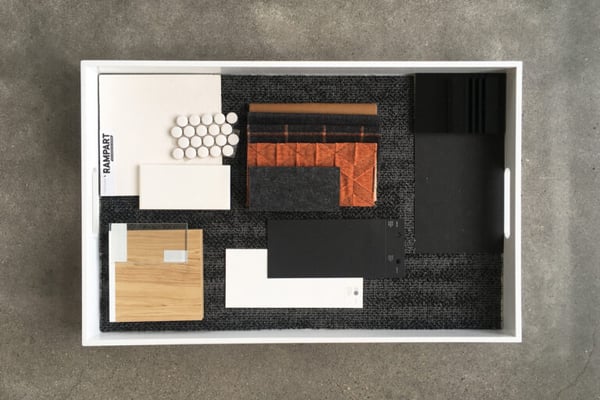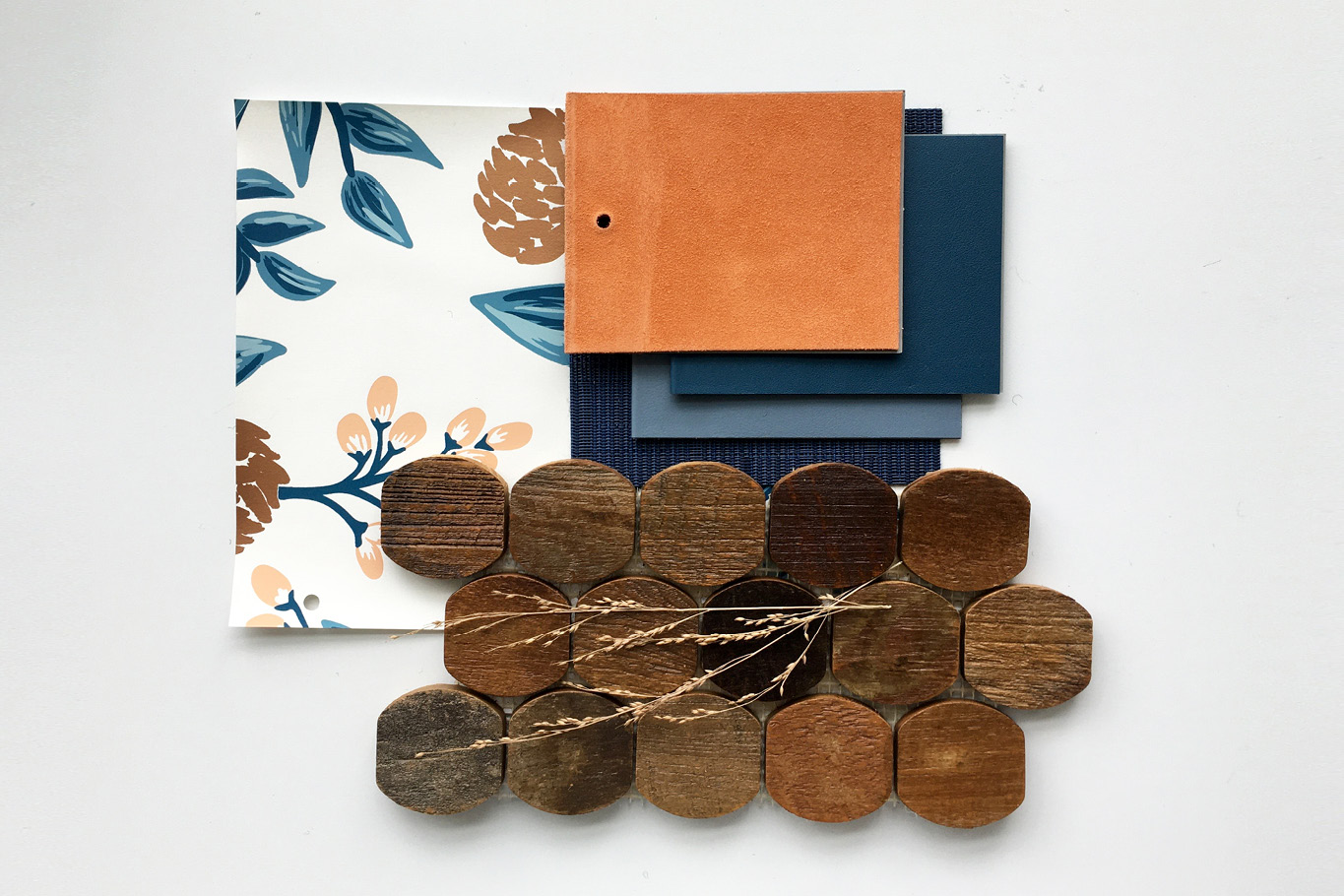Next time you walk into a building, pay attention to the details. Every material—from the flooring to the door handle—has been carefully selected by a design team. If you start a building project of your own, you will take part in the exciting process of selecting materials.
Depending on the size and complexity of your project, you will choose a range of exterior and interior materials. You may make large-scale decisions related to cladding and flooring and small-scale decisions related to hardware and textiles.
If the process sounds daunting, fear not. Your design team is there to establish aesthetic guidelines, research products, and help you weigh the pros and cons of each option.
This article will break down the four steps of the material selection process:
- Establish goals
- Create a palette
- Research options
- Make selections
After reading, you will better understand how the process works and what you need to consider.
4 Steps of the Material Selection Process
1. Establish Goals
The material selection process begins with establishing overarching goals. Every material has maintenance, sustainability, and cost implications. At the beginning of your project, you should set cost and performance requirements to narrow your product search.
Your design team will help you set goals for various metrics, including:
- Initial cost
- Longevity
- Maintainability
- Sustainability
- Cleanability
These goals will aid the design team when researching materials. For example, if sustainability is your top priority, they may focus on recycled or locally sourced products. Your goals will also help you weigh the pros and cons of each option.
2. Create a Palette
Along with cost and performance goals, you will also establish aesthetic guidelines. In the early stages of the design process, you will view precedent projects to give the design team a better understanding of your likes and dislikes. This information will help them create material palettes.
A material palette is a combination of different material types that help you visualize the overall look and feel of the completed space. Exterior palettes may show façade treatments, while interior palettes may feature a combination of flooring, wall and ceiling finishes, and textiles.
The exact products featured in a palette may not necessarily make it to the final design. Instead, the design team will look for options that provide a similar aesthetic while meeting your cost and performance goals.

Interior palettes may display options for flooring, wall and ceiling finishes, and textiles.
3. Research Options
With goals and aesthetic requirements set, the design team can research options. Depending on your goals, the team will analyze pricing, performance data, sourcing, and ingredients. They may also perform a life cycle cost analysis to help you understand what you may pay in long-term maintenance and replacement costs.
Special project requirements may lengthen this part of the process. For example, a building verification system like the Living Building Challenge may limit your options to products that meet specific sustainability metrics. The team will vet each product to ensure you meet the verification system’s standards.
4. Make Selections
Most material selection occurs during Design Development. Usually, you will select exterior materials like façade treatments first.
Once you’ve nailed down the building’s exterior, you can determine interior materials. Flooring tends to be the most important material because it takes up the most surface area, goes through the most wear and tear, and makes the biggest impression.
On most projects, you will select flooring before selecting materials for other interior surfaces, like ceilings, walls, and counters. Usually, decisions like paint colors and hardware come last.
Throughout the selection process, your design team will provide cost and performance data for each option, helping you weigh the pros and cons. They can also provide a list of building owners who have used the same product. You are free to contact these building owners and ask about their experience with the product.
Your design team should give you all the information needed to make informed decisions.
What Are Your Next Steps?
Material selection is a crucial part of every building project. Although it may seem daunting, your design team is there to help.
Throughout the design process, they will help you set goals, determine aesthetic requirements, and weigh the pros and cons of each option. Research and planning will help you find products that provide the look you want and the performance you require.
After selecting materials during Design Development, your design team will start finalizing the contract documents. Learn what to expect by reading about the Contract Documents design phase.
